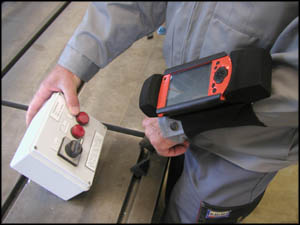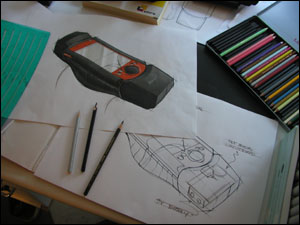Three years ago, while scanning the literature+web about a PhD topic about location-awareness, I stumbled across Hunaja, avery pertinent mobile social software developed by some good finnish folk at Aula. I remember at that time being briefly in contact with Jyri.
Hunaja is an RFID access control system that enables users to remotely check who is logged in at a physical location by using the Web or a mobile phone. Hunaja was developed in 2001-2002 by Aula Cooperative, which is a non-profit organization based in Helsinki, Finland. In addition to controlling the doors of the Aula space, Hunaja has three unique features:
- Linkage to Aula's weblog - enabling online members to remotely see who is logged in at Aula's physical space
- SMS access - enabling members to check who's there with their mobile phones
- A speech synthesizer at the door - enabling online members to send greeting messages. The messages are announced by a computer voice when the recipient logs inat Aula's door
For three months (May-July, 2002), Aula issued a trial set of 50 RFID tags to its members. Of those 50 members, 9 members were selected for this user study. All of the participants were in the 20-35 year-old age group, and their use of the system was followed and recorded for two weeks during the month of July.
What is of particular interest for me is the fact that they conducted a very relevant user study. It was a focus group consisted of 9 people between the ages of 20-35, whose usage patterns were followed for two weeks in July, 2002.
was interested by the reason why people are scouting moves: Entertainment / Time-saving / Spying / Romance / Avoidance / Professional interests / Recruitment. Here is an extract I found relevant to my work:
For the observers, Hunaja provided three media of ”browsing” other people: Web, SMS, and the Aula space. Hunaja worked as a personal intelligence system that enabled the users to optimize their actions (scout useful next steps) and build a strategy for personal postitioning in the network.
Examples of observer behavior:
A male user intends to meet a female user without wanting that person to know that he is looking for her
A user does not want to meet a specific person and uses Hunaja to avoid meeting that person in Aula
A user browses Aula member cards to recruit suitable people for a project
For the observed, Hunaja provided a method to ”be noticed”. Motives linked to this included the desire to make new contacts, showing commitment to developing the user community, personal branding, and career-building.
Some users were motivated by the desire to belong to a close-knit group. Stephanie, the 29-year old French graduate student, for instance, had become a Hunaja user because she had a strong desire to establish herself in communities of like-minded people in Helsinki. She placed strong symbolic value on the RFID tag as a token of group membership. For her, appearing on Hunaja was a prerequisite for group membership, and she took care to establish herself as an active user in the eyes of others. In a similar vein, Lisa, a 26-year old manager at an e-learning company, used the term “addiction” to describe her relationship to Hunaja. In the interview she said: “I thought, do people thing that if I don’t show up on Hunaja or visit the weblog at least once a week, will they think that I want to keep up some kind of super privacy and that I’m fed up with Aula or something.” She felt a strong obligation to use Hunaja so as to “not give the wrong impression” of ignorance and passivity. Such instances describe situations where use of the technology becomes a prerequisite for group membership. You have to use the system in order to”exist” in the community. This may be a strong driver for adoption of future mass-market technologies geared for “small worlds” like Aula.
Why do I blog this? because my phd research work is about how location awareness of others impacts social and cognitive processes.
 (image taken from the
(image taken from the 












 Why do I blog this? It's interesting to see that it's a way to repackage existing devices. This is the same phenomenon as the
Why do I blog this? It's interesting to see that it's a way to repackage existing devices. This is the same phenomenon as the 